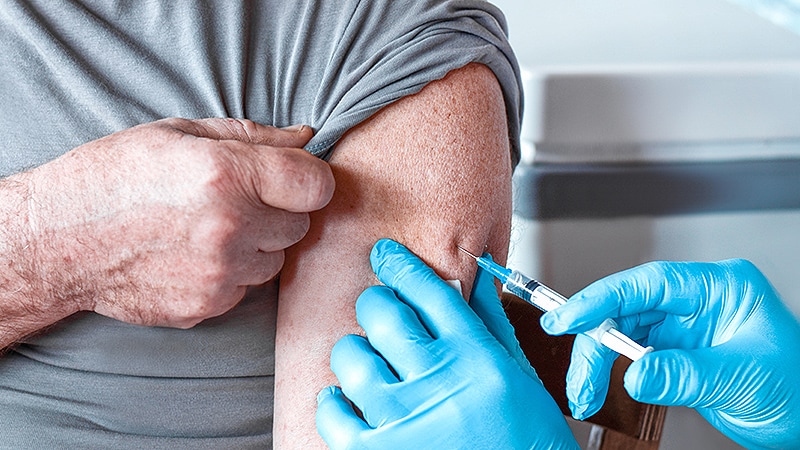insight - Healthcare Equity - # Factors Influencing COVID-19 Vaccination Rates in Marginalized Communities
Disparities in COVID-19 Vaccination Rates Linked to Marginalized Patient Populations and Physician Characteristics
Core Concepts
Physicians serving marginalized communities had the highest proportion of unvaccinated patients against COVID-19, highlighting the need for targeted interventions to improve vaccine access and uptake in underserved populations.
Abstract
The study examined the characteristics of family physicians in Ontario, Canada, who had the highest proportion of unvaccinated patients against COVID-19. The key findings are:
Physicians with the largest proportion of unvaccinated patients were more likely to be male, trained outside Canada, older, and work in an enhanced fee-for-service model compared to their counterparts with lower proportions of unvaccinated patients.
Patients enrolled with the most unvaccinated physician group tended to live in areas with more ethnic diversity, higher material deprivation, and lower incomes, with a higher proportion of recent immigrants.
The physicians with the highest proportion of unvaccinated patients cared for 259,130 unvaccinated patients, with a vaccination rate of 74.2% for two or more doses, compared to 87.0% in the remaining 90% of physicians.
The findings highlight the ongoing inverse relationship between the need for care and its accessibility and utilization, indicating the need for more equitable systems and processes to support primary care teams in influencing vaccine-related decision-making in marginalized communities.
COVID Vaccinations Less Prevalent in Marginalized Patients
Stats
The physicians with the highest proportion of unvaccinated patients cared for 259,130 unvaccinated patients as of November 1, 2021.
The proportion of patients who received two or more doses of the SARS-CoV-2 vaccine in this group was 74.2%.
The proportion of patients who received two or more doses of the vaccine was 87.0% in the remaining 90% of physicians.
Quotes
"The family physicians with the most unvaccinated patients were also more likely to be solo practitioners and less likely to practice in team-based models, meaning they may have fewer support staff in their clinics."
"Clinics or practices with a large number of unvaccinated patients could be viable targets for efforts to coordinate public health and primary care."
"The information they provide will be useful in helping us to move forward working with underserved, underresourced communities and also hopefully provide the clinicians, family physicians, and nurse practitioners working in these areas with more resources."
Key Insights Distilled From
by Fran at www.medscape.com 04-15-2024
https://www.medscape.com/viewarticle/covid-vaccinations-less-prevalent-marginalized-patients-2024a100073m
Deeper Inquiries
How can public health and primary care collaborate more effectively to address the barriers to vaccine uptake in marginalized communities?
To enhance collaboration between public health and primary care in addressing vaccine uptake barriers in marginalized communities, several strategies can be implemented. Firstly, establishing strong communication channels and partnerships between public health departments and primary care providers is crucial. This can involve regular meetings, shared data systems, and joint outreach efforts to ensure a coordinated approach. Additionally, targeted outreach programs tailored to the specific needs of marginalized communities, such as culturally sensitive messaging and community engagement, can help build trust and increase vaccine acceptance. Training primary care providers on vaccine education and addressing vaccine hesitancy can also be beneficial in empowering them to support their patients effectively. Moreover, leveraging community health workers and other trusted individuals within these communities can further enhance vaccine uptake by providing personalized support and guidance.
What other socioeconomic and demographic factors, beyond those identified in the study, may contribute to the disparities in COVID-19 vaccination rates among different patient populations?
In addition to the factors identified in the study, several other socioeconomic and demographic factors may contribute to disparities in COVID-19 vaccination rates among different patient populations. These factors can include language barriers, limited health literacy, lack of access to transportation, and vaccine site locations. Housing instability, employment status, and insurance coverage can also play a role in vaccine uptake disparities. Furthermore, historical mistrust of the healthcare system, systemic racism, and experiences of discrimination can impact individuals' willingness to get vaccinated. Cultural beliefs, religious practices, and misinformation circulating within communities are additional factors that can influence vaccination rates. Addressing these multifaceted barriers requires a comprehensive and tailored approach that considers the unique needs of diverse patient populations.
How can the healthcare system better support and empower primary care providers serving marginalized communities to improve vaccine access and influence vaccine decision-making among their patients?
To better support and empower primary care providers serving marginalized communities in improving vaccine access and influencing vaccine decision-making, several strategies can be implemented. Providing targeted training and resources on vaccine education, addressing vaccine hesitancy, and effective communication strategies can enhance providers' confidence in discussing vaccines with their patients. Offering incentives or reimbursement for vaccine counseling and administration can also motivate providers to prioritize vaccination efforts. Implementing culturally competent care practices and language services can help bridge communication gaps and build trust with patients from diverse backgrounds. Additionally, ensuring adequate staffing levels and support for primary care practices in underserved areas can alleviate the burden on providers and enhance their capacity to deliver vaccines. Collaborating with community organizations, public health agencies, and local leaders can further strengthen the healthcare system's ability to reach marginalized populations and promote vaccine equity.
0
